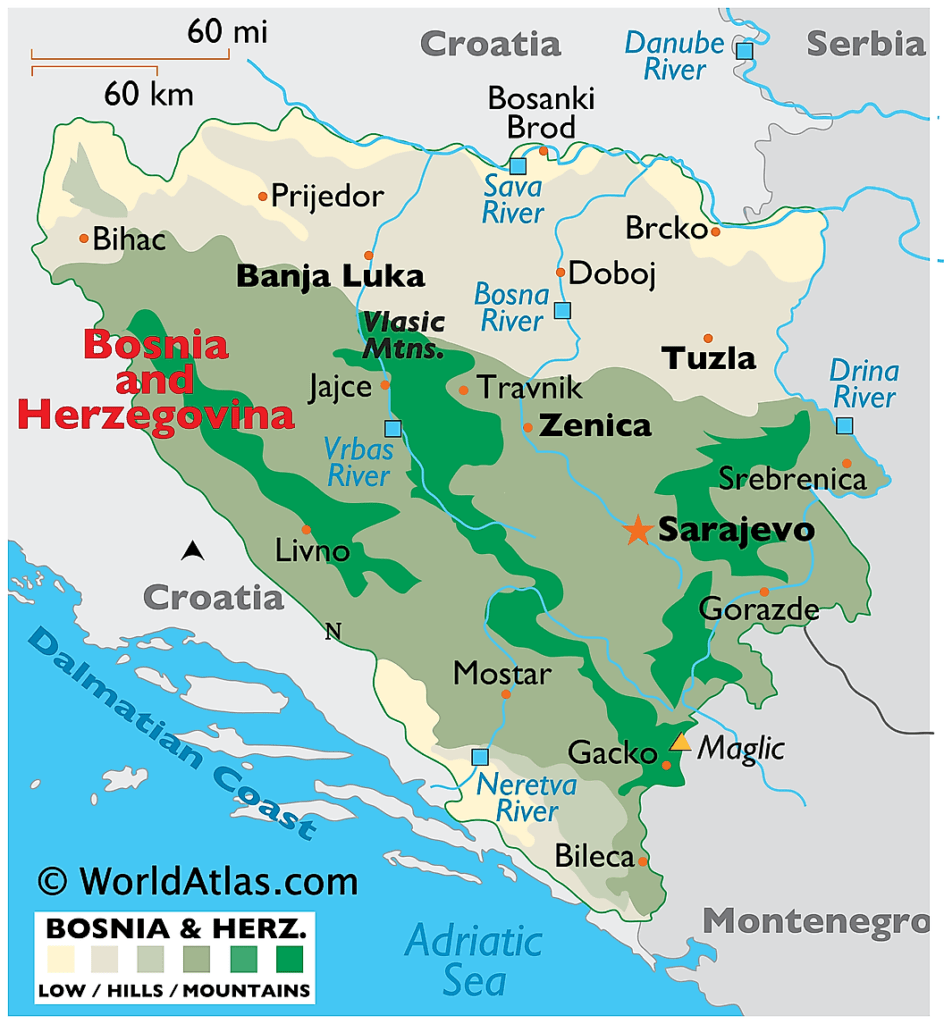Bosnia & Herzegovina
Bosnia and Herzegovina, located in the Western Balkans, is bordered by Croatia, Serbia, and Montenegro. It is divided into two entities, the Serbian Republic (49% of the territory) and the Muslim-Croat Federation (51% of the territory), with its capital in Sarajevo.
The Bosnian War of 1992-1995 devasted the newly formed country as it began its independence from Yugoslavia. Strong ethnic and religious divides came to the forefront as whole villages were burned and the once majestic Sarajevo Olympic stadium and its surrounding sports fields were turned into graveyards. It is estimated that more than 100,000 people lost their lives and nearly two million left the country seeking refuge.
After signing a peace accord in December 1995, a painful peace and reconciliation process started, along with the rebuilding of the country. Twenty-five years later, the economy is still in ruins, unemployment and corruption are high, ethnic and religious divides still run deep, and young people continue to migrate to seek a better life. Many feel hopeless and are in need of the hope of Christ.
More Information About Bosnia and Herzegovina
- Population: 3.2 million–Bosniaks (44%), Serbs (31%) and Croats (17%)
- Official Language: Bosnian, Serbian, Croatian
- State of the Economy: During the Bosnian War, the economy suffered €200 billion in material damages. Bosnia and Herzegovina faces the dual-problem of rebuilding a war-torn country and introducing transitional liberal market reforms. The political leadership system is corrupt and complicated, and unemployment rates are very high. People are starting to lose hope for a better future.
- Religion: Bosnia and Herzegovina is a religiously diverse country. According to the 2013 census, Muslims comprise 50.7% of the population, Orthodox Christians 30.7%, Catholic Christians 15.2%, and the rest are either atheist, agnostic, or undeclared.
- State of the Church: In the midst of much hardship, small communities of Jesus followers are spreading the gospel of hope. Before the war, there were only three evangelical churches in the whole country. Now, there are about 25 to 30 fellowships with a total of 700-1,000 believers, yet most of these churches were started two decades ago. Few churches have been planted since then. Evangelical Christians represent a mere 0.03% of the population. (Note: this is the correct percentage rather than the one below).
Total Population
3,204,000
Population in Unreached
1,644,000 (51.3%)
Largest Religion
Islam (50.0%)
% Christian Adherent
40.7%
% Evangelical
0.26%
Evangelical Annual Growth Rate
2.1%
(Global Rate = 2.6%)
(Source: JoshuaProject.com. For more detailed information, visit https://joshuaproject.net/countries/BK
Note: where more current statistics are known, those are being used in place of Joshua Project.)


